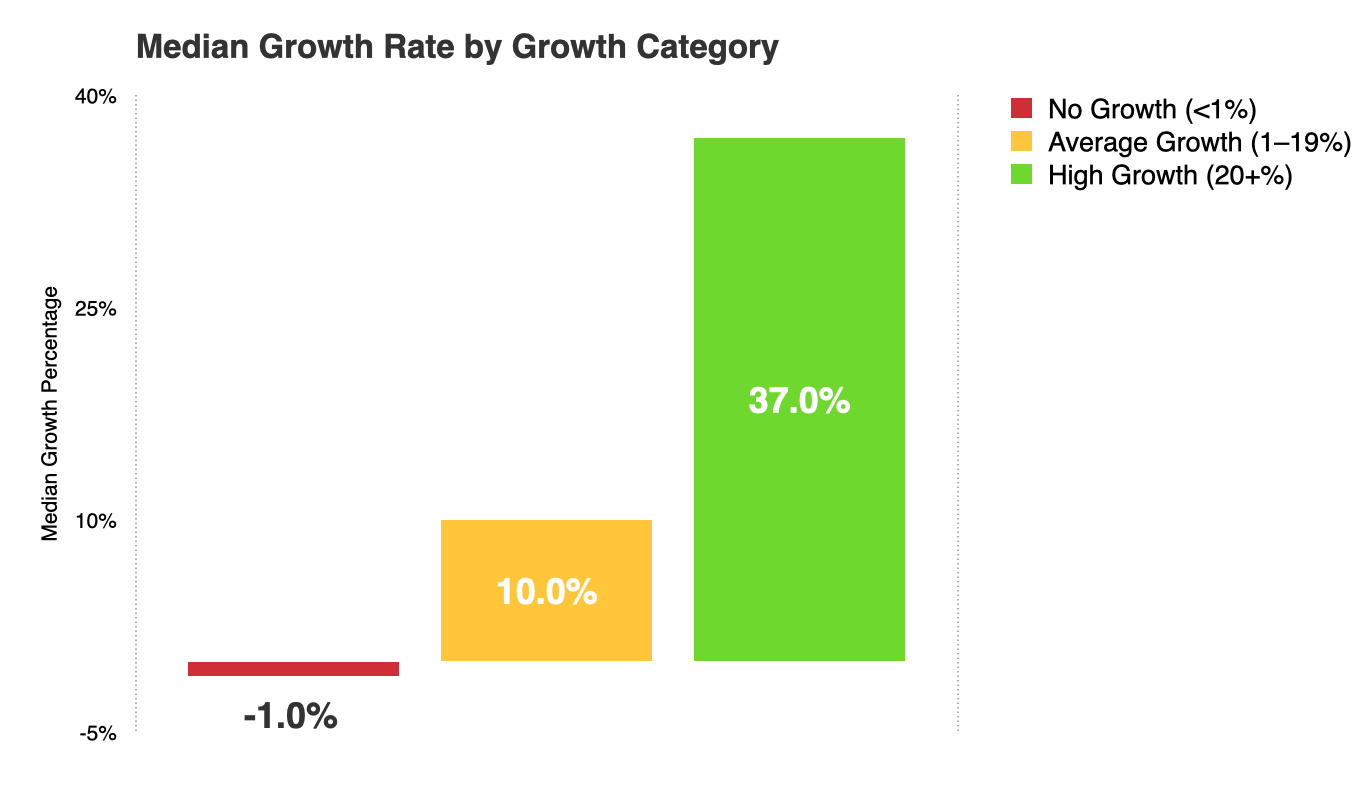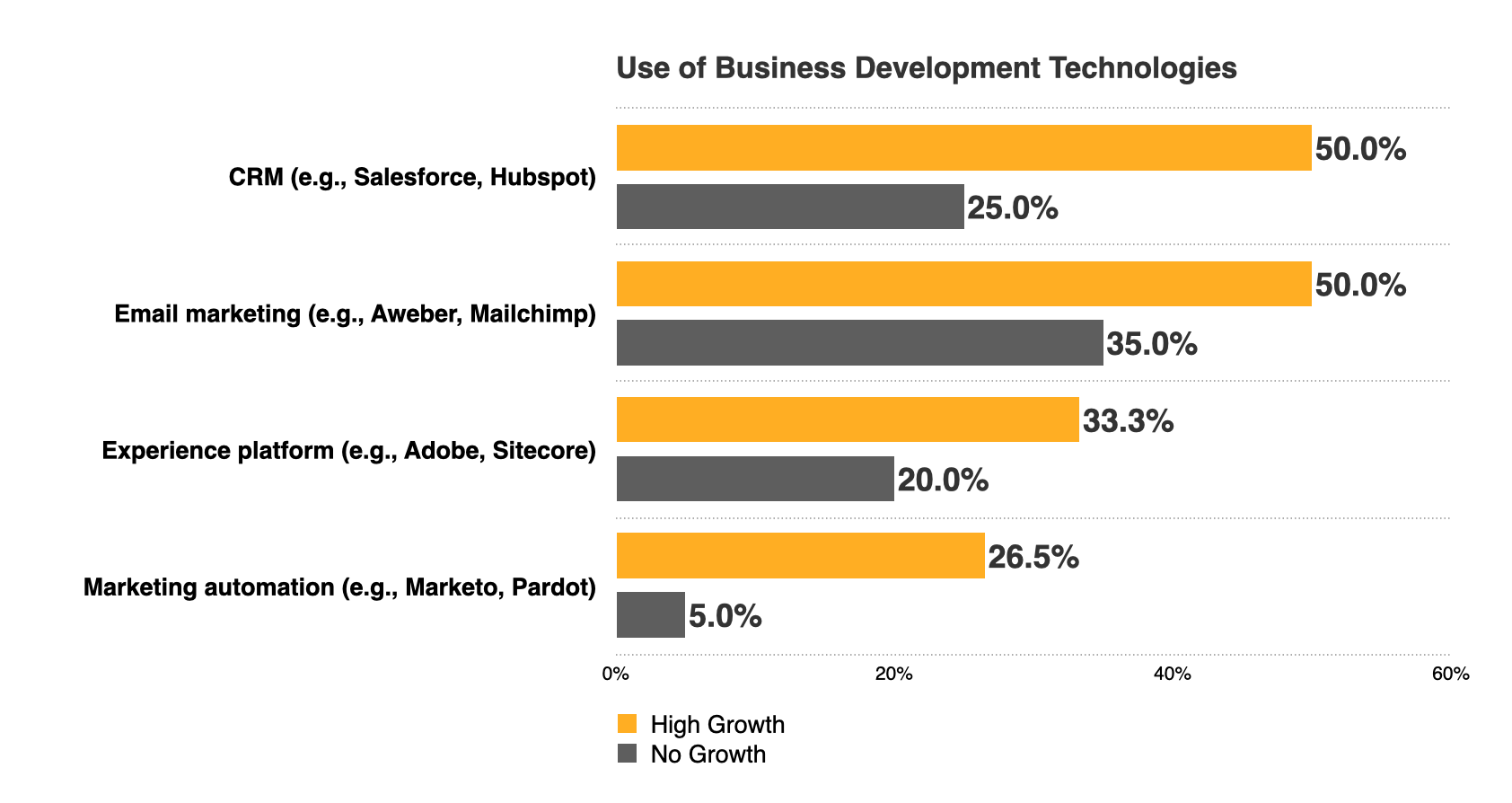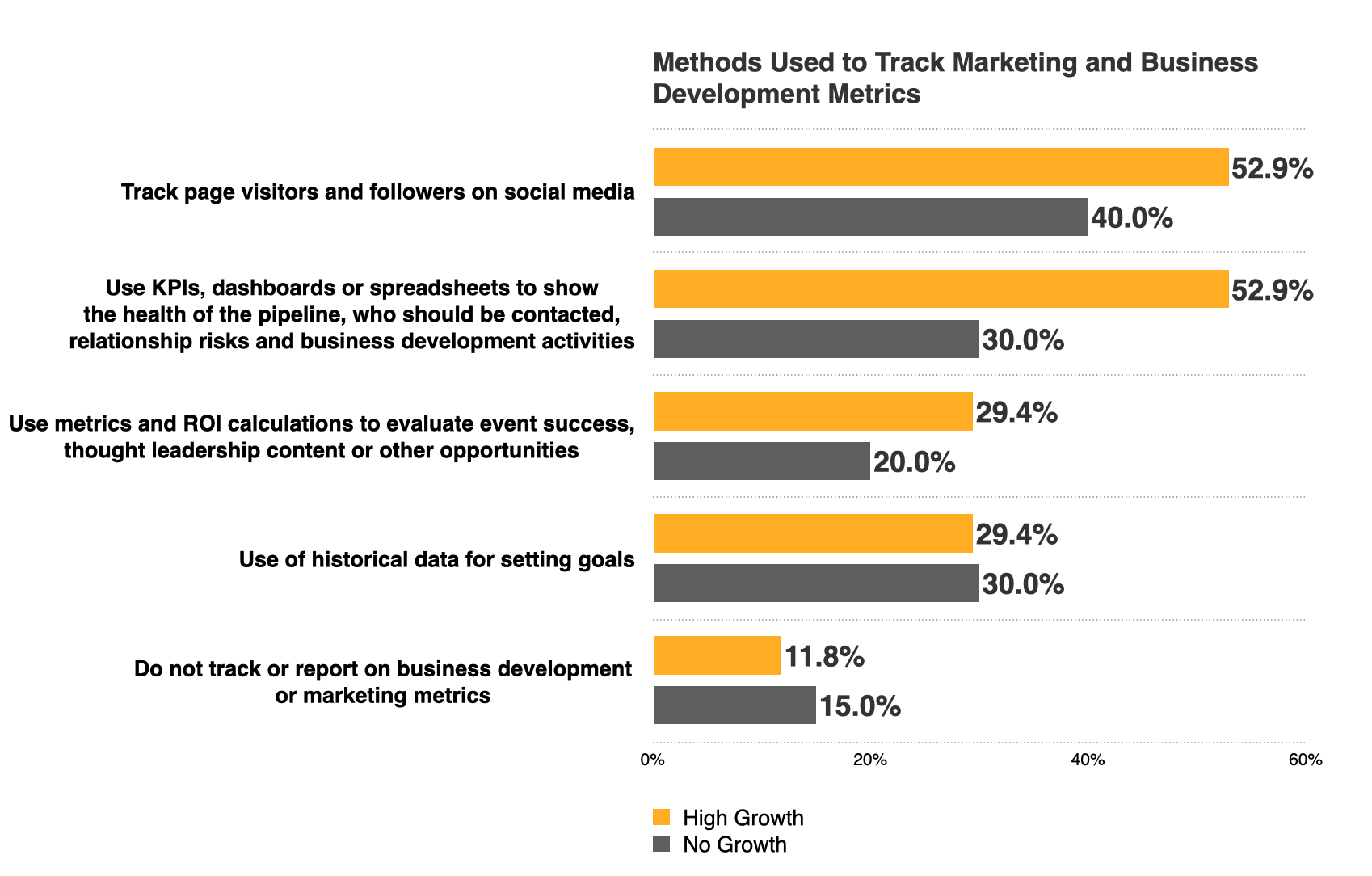While many businesses failed or struggled to stay afloat over the past year, a small number emerged from the post-vaccination environment in better shape than they were before the pandemic. How did these businesses achieve growth rates that would have been difficult without last year’s uncertainties? And, what lessons can we learn from them to weather the storms ahead?
LexisNexis Interaction and the Hinge Research Institute have just released the Law Firm & Legal Services Edition of the High Growth Study 2022. This year’s annual study surveyed respondents from 115 law firms of all sizes. It covers topics such as the digital transformation and maturity of firms, their biggest challenges, future priorities, and what key factors helped some firms enjoy a compound annual growth rate of 20% or greater (what we refer to as high growth) in 2021 while remaining highly profitable. The study analyzes these high-growth firms’ technology, strategies, and techniques. You’ll learn how these firms thrived amid economic disruptions—and what strategies your firm could adopt to grow through even the most challenging circumstances.
High Growth Firms and How They Achieved Extraordinary Growth in 2021
High growth law firms grew at a median rate of nearly 37%, up 43% from last year’s rate. For perspective, average growth firms grew at only 10% while the no-growth group watched their revenues contract by 1%. Last year’s high growth firms grew at a rate of 25.7%, while average growth firms grew 11.5%, and no growth firms shrank by 3%. In short, high-growth firms have extended their lead over their slower-growing peers by a significant amount in just one year.

So what explains the extraordinary growth of this year’s high-growth law firms? How did they pull far ahead of their peers despite an economic calamity that spanned the world?
Let’s start with what doesn’t explain their growth.
High-growth firms didn’t forego profitability for growth. Nearly eight in 10 were highly profitable, up 100% from last year. By contrast, only 29% of no-growth firms were highly profitable.

Nor did they derive much of their growth from M&A activity, which accounted for only 18% of revenue growth, down from 22% of their revenue in the previous year.
Size didn’t matter either; high-growth firms came in all sizes. However, the largest number fell under the mid-size category (100-499 employees and revenues between $5-50M).
What spurred extraordinary growth and high profitability? What were high-growth law firms doing differently? Where did they leverage advantages? This year, four key factors explain high growth law firms’ historic performance.
Technology
In response to 2021’s market shakeup, high-growth law firms embraced marketing and business development technology. They used CRM platforms twice as much as no-growth firms, likely enabling them to build better relationships with prospects and offer more services to existing clients while lowering the cost of business development, fueling more growth and profitability.

The gaps are also pronounced in the use of marketing automation (43% more) and experience platforms (67% more).
High-growth law firms are not only just using more technology, but they’re also achieving greater impact. Tracking metrics is integral to how they run their marketing and business development functions. They mobilize technology, such as Customer Relationship Management (CRM) platforms to make better marketing and business development decisions. They’re 76% more likely to track pipeline health. They’re 47% more likely to use ROI calculations when assessing the effectiveness of their efforts.

Talent
High-growth law firms invest in accessing expert marketing talent. They rated their marketing functions’ capabilities higher across all skills area
s than no-growth firms did theirs. High growth law firm marketing teams enjoy the greatest skill advantage in the following areas: PR and outreach (21% higher), SEO (14%), social media (13%), strategy development (13%), and research (10%).
When they can’t hire high-caliber talent, high-growth firms engage third-party agencies. They are almost twice as likely as no growth firms to outsource SEO, 41% more likely to outsource graphic design, and 57% more likely to outsource strategy development.
A growing percentage of no-growth firms are outsourcing some of their marketing efforts as well. The question is, are they gaining access to top-tier talent?
Marketing Techniques
High-growth law firms’ investment in marketing and business development typically covers a broader range of activities. But even more important, their marketing efforts deliver better returns than other firms.
Their top five most impactful marketing techniques are networking at events, earned media/PR, assessments and consultations, and networking on social media. When no growth firms used the same techniques, they failed to achieve the same results.
 To see the full list of the most impactful high-growth marketing techniques, purchase the full report here.
To see the full list of the most impactful high-growth marketing techniques, purchase the full report here.
The most plausible explanation for the disparities in impact is the yawning skills gap. High-growth firms had better access to top-tier marketing talent—either in-house, through outsourcing, or both. Expert marketing talent enabled them to use technology and techniques to greater effect. This is particularly true when it comes to SEO. More than half of no growth firms are stuck in low maturity levels while close to three-fourths of high growth firms are at mid to high levels of maturity.
Higher SEO maturity delivered more digital leads and higher levels of profitability. High-growth firms had only a slight advantage in SEO in 2020, but that gap has widened ever since. As marketing campaigns rely increasingly on digital channels, SEO will play a more crucial role in reaching audiences and converting them into clients.
Strategy
High-growth firms differ from the rest in the business challenges they foresee. They’re 56% more likely to expect challenges related to automation and three times more likely to expect regulatory changes. Thirty-three percent more high-growth firms expect changes in buyer behavior.
These forecasts are shaping the priorities of high-growth firms in 2022. The top three are artificial intelligence, blockchain, and alternative billing models.

It’s clear that high-growth firms focused on sharing valuable information with their target audience at a time when no-growth firms needed help coping with new challenges. And as many events and communications remain online, high-growth firms ensure that their insights would be where their audiences were searching (e.g., company website, social media).
Conclusion
What can we learn from high-growth law firms? These firms embrace technology and find the talent who can reap the most benefit from technology and execute a wider range of marketing techniques. When that talent doesn’t exist in-house, these firms outsource marketing initiatives to seasoned experts with a track record of success. Outsourcing has sheltered them from the past year’s historic labor shortage now widely known as the Great Resignation. They also hold themselves to account for their marketing decisions. Equipped with data-driven insights their competitors don’t have, they’re able to adjust their campaigns to improve performance, even as the economy alternates between slowing down and growing.
If these firms can grow during last year’s tempest, they’re likely poised to thrive through many of the storms ahead.
Additional Resources
Gain access the full report of the 2022 High Growth Study: Legal Edition by purchasing it here.

